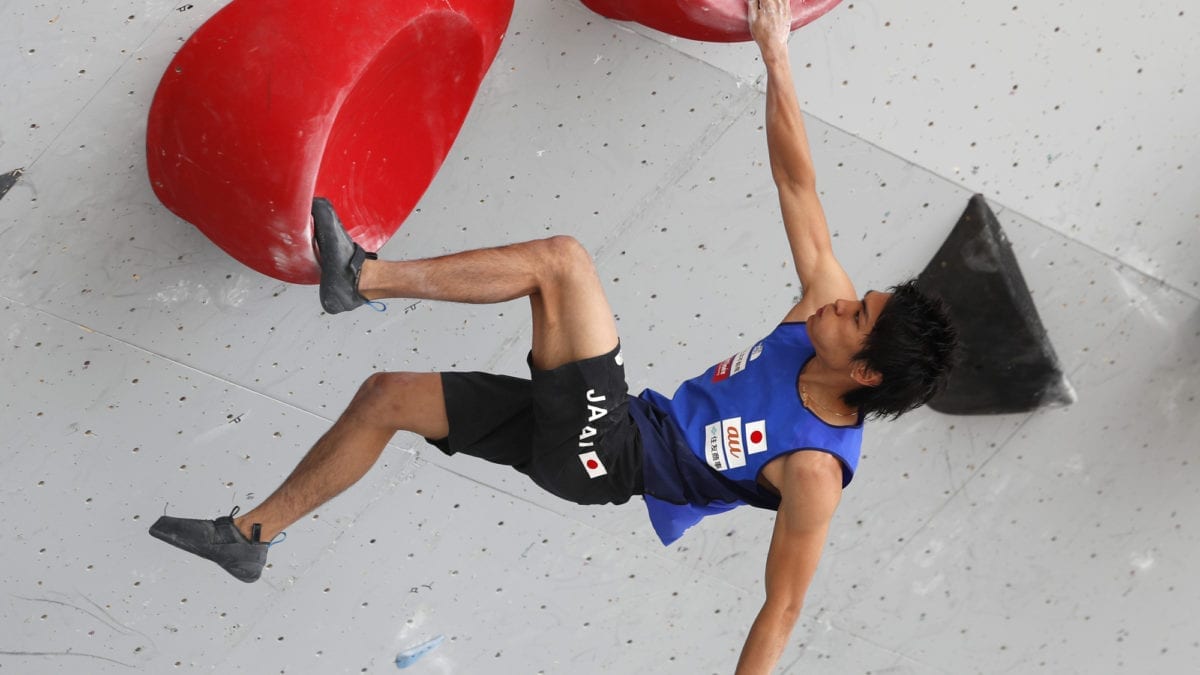Top Olympian Tomoa Narasaki Teaches Coordination
Top-ranked Olympian Tomoa Naraski teaches how to complete a volume walk in this new video. Learn from Team Japan's best
 Photo by: Eddie Fowke
Photo by: Eddie Fowke
Climbing has many forms, but modern coordination boulders seem to offer greater complexity, per move, than any other discipline. Although trad, lead, and bouldering each come with their own challenges, the balance and pacing required to complete even a simple volume-walk does not relate to that which most climbers have become used to.
Some will say that they do not like competition style movement because it does not reflect real rock climbing. While a competition boulder may not present in nature as it might in a World Cup, many of the movements transfer. To that effect, dynamic beta generated from the hip requires less finger strength and power. In fact, this smooth sort of efficiency defines good technique.
While many will decide their training sufficient, those that spend the time working their weaknesses will ultimately fare better when out on the rock. Although some stronger climbers may find it difficult to fall off of coordination boulders rated beneath their limit, they will become better for it.
In order to learn the basics of coordination movements, it helps to learn from the best. The top-ranked Olympic Climber, Tomoa Narasaki, has teamed up with Olympian Akiyo Noguchi and Speed coach Yudai Ikeda to produce a brand-new climbing YouTube Series.
There 10-minute video covers the four main rules for volume walking:
Be free and relax.
Step Position
Think about the footsteps order in reverse from the end goal
Think about the distance from the wall.
While the video itself only covers a single type of coordinate boulder problem, many of the rules work with other dynamical movements. In fact, these ideas transfer well to rock climbing as well.
Thinking about any move from the end-position of that movement helps the climber stick the hold. Even a simple dead-point is somewhat of a dynamic move. Imagine you are working a difficult move. Perhaps you give it several goes, and although you can touch the hold, you find difficulty sticking the grip. Maybe the foot pops or your hand rips off the grip because you are moving too fast. How do you get closer?
While trying it from the bottom will ultimately yield success, pulling on to the end-position of that movement will describe where your body must end up should you want to complete the movement. With that in mind, trying the move becomes less about gripping the holds. Instead, it becomes more about pulling your body into that final position. In this way, you will climb the sequence in a much more relaxed manner. This will save energy as it increases efficiency.
While Tomoa, Ikeda and Akiyo join the many pro climbers making new YouTube videos, it will be exciting to see their further tutorials as time progresses. Check out their channel here.


